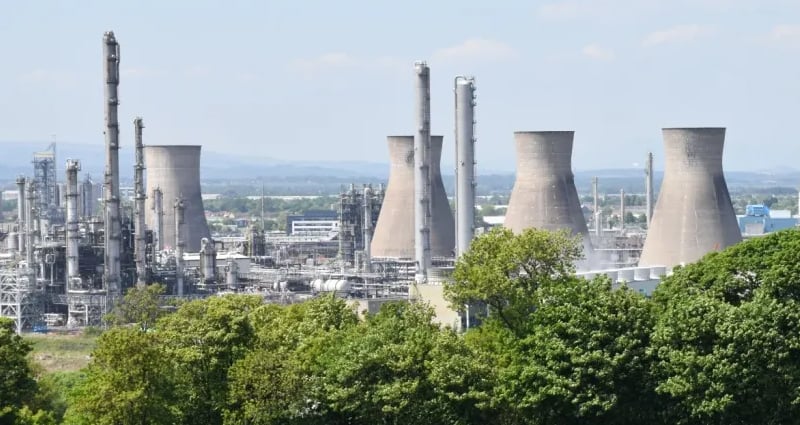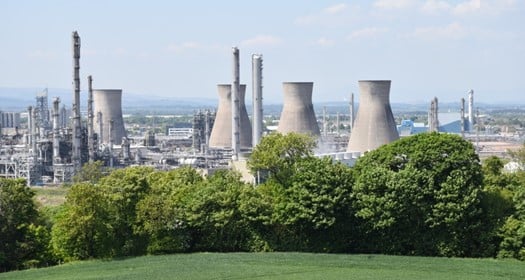Carbon credits have had some negative connotations due to their misuse in the past. However, they...
The potential of carbon capture is huge. For example, it’s thought that up to 90% of carbon emissions from the industrial use of fossil fuels could be captured using carbon capture and storage (CCS) methods. But of course, such a promising process doesn’t come without its challenges. People need to know the carbon capture and storage risks involved in practices like Direct Air Capture (DAC) to fully decide whether to invest.
A Note on Carbon Capture
Carbon capture and storage (CCS) is a relatively new concept, allowing governments, companies and other organisations to effectively buy back the carbon they’re using to mitigate its environmental impact. More importantly, carbon capture is more than just a purchase but a legitimate way to remove carbon from the atmosphere.
Carbon capture is currently offered in limited locations worldwide. But with greater investment, the availability and affordability of carbon removal are thought to improve in the future.
These Direct Air Capture (DAC) plants practice carbon removal by taking atmospheric air and purifying it, leaving a compressed, concentrated form of carbon that’s ready for safe storage.
But is CCS always this simple?
Carbon Capture and Storage Risks
There are many compelling reasons to employ CCS in net-zero strategies. That said, there are risks involved, mostly about storage, that those involved in the operation must address for CCS to succeed
Carbon Leakage
The largest and most obvious risk of CCS is leakage. When compressed carbon is stored in underground reservoirs, it runs a small risk of leaking either abruptly or gradually, creating potentially catastrophic effects on the environment and its inhabitants.
For this reason, some are sceptical about scaling the use of Direct Air Capture (DAC) and relying on its potential to get us to net-zero. It's what The International Council on Clean Transportation calls ‘a lot of eggs in a potentially leaky basket.’
Leakage can occur due to injection well failure, undetected faults, fractures, seal failure, poor site selection, poor preparation and mineral dissolution. If a site has active groundwater flow, it may not be apt for underground storage, as it won’t be if many abandoned wells surround it or if it's a poor quality formation that can’t handle the pressure put on it by CO2 storage.
If leakage occurs, it could negate its environmental effect and pose a severe risk to human and animal health. CO2 stored in low-lying areas and at a high concentration paired with the co-capture of poisonous hydrogen sulphide would have a hazardous effect on workers and any other organism close to the vicinity.
Although this sounds like a clear reason to steer away from carbon storage, it mirrors a similar challenge that the underground gas industry has been managing for years. To make CO2 storage work, plants need to lean on experts from this industry to help monitor CO2 storage and offer advice about best practices. In doing so, DAC plants can minimise the risk of leakage and be confident in carrying out CO2 injection and storage monitoring. With the help of these unlikely stakeholders, DAC has viability.
Other Related Risks
Storage, by and far, is the greatest consideration for carbon removal. However, some issues can occur earlier in the process. For example, transportation issues can occur when CO2 mixes with water. In this formula, CO2 can be corrosive impacting pipelines used to transport CO2 to storage sites.
Then there’s also the possibility that the pressure of CO2 injections could have small seismic effects or tremors, depending on the geological formation, making site selection that much more critical.
Lastly, the potentially hazardous and harmful effects of CO2 leakage could make DAC plants a terrorist target.
All of these factors need to be considered by DAC plants and be addressed in robust risk mitigation strategies.
Overcoming Carbon Capture Storage Risks
If we want to tap into carbon removal’s role in achieving net-zero, we need to find ways to overcome and mitigate its greatest risks so as not to undo any hard work done to redress the greenhouse gas emission problem.
DAC plants must look to:
- Commit to long-term monitoring for the length of carbon capture guarantee, including continual monitoring of CO2 on-site as well as pipe corrosion
- Create risk mitigation strategies, using the Fault Tree Analysis as a framework for hazardous materials
- Employ responsible site regulation and planning by conducting an environmental assessment, as well as adhering to all legislation currently applicable to CCS strategies
- Utilise technology within the injection process such as underground sensors to oversee the safe storage of CO2
- Partner and consult with experienced operators that are well-versed with the process of underground storage
- Consider dissolving CO2 in water to inject as a liquid rather than gas to reduce the likelihood of compression and leakage
If these processes are followed, the risk of leakage is thought to be minimal.
Even though CCS is in its infancy, the risks posed by the process, namely, in the storage section, can be evidenced and supported by the underground gas storage industry, which presents a strikingly similar scenario. For this reason, we can be assured that the risk of leakage, no matter how grave it sounds, can be combated with proper preparation and analysis.
Carbon Capture and Storage: Is It Worth the Risk?
Despite its potential downfalls, Direct Air Capture (DAC) is still thought to be an appropriate solution for carbon sequestration, becoming a vital part of the UK’s strategy to reach net-zero by 2050, as well as Microsoft’s more ambitious objective of reaching carbon-negative status by 2030.
Carbon capture will undoubtedly require careful management with a considered group of stakeholders. However, ultimately, carbon removal can still act as the light at the end of the tunnel for all who are striving towards carbon neutrality.
Learn more about carbon removal and DAC’s role in the net-zero strategy by reading our whitepaper Race to Net Zero: From Commitment to Direct Air Capture.




.webp)
